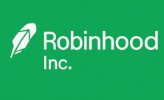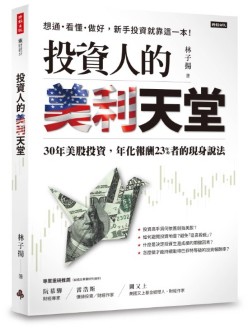Company Introduction
Founders
Robinhood Markets (ticker: HOOD) was founded in April 2013 by Vladimir Tenev and Baiju Bhatt. Their goal was to design a free, easy-to-use, and addictive mobile app.
Origins of the Company
The company is named after Robin Hood, inspired by its mission to make financial markets accessible to everyone, not just the wealthy. The company is considered an innovator in zero-commission stock trading because it relies on other sources of income. Its target customers are millennials; as of March 2025, the average age of its customers was 35.
How did Robinhood rise?
The founders launched their business as a protest against Wall Street’s financial monopoly, advocating for the democratization of finance and access to it for all, which garnered support. Ironically, Robinhood has now become the very thing it opposed, becoming no different from Wall Street itself. It now appears to have strayed significantly from its original purpose.
Overview of Services
Robinhood provides an electronic trading platform that facilitates trading in stocks, exchange-traded funds, options, index options, futures contracts, prediction market outcomes, and cryptocurrencies. It also offers cryptocurrency wallets, wealth management, credit cards, and other banking services.
Initial Public Offering
Robinhood conducted a direct listing on the Nasdaq Stock Exchange on July 29, 2021, under the ticker symbol HOOD. IPO Price: $38 per share, IPO Valuation: Approximately $32 billion.
Key Operating Statistics
2024 Annual Result
In 2024, Robinhood’s revenue was nearly $3 billion and its profit was $1.4 billion.
Number of Accounts and Customers
In terms of the number of active or funded accounts, Robinhood, with 26 million, is rapidly approaching Charles Schwab’s 37 million. It is also three times the number of Morgan Stanley’s E-Trade and six times that of Merrill Lynch.
Asset Size
- Robinhood Strategies’ digital advisory service reaches $500 million in assets under management (AUM)
- Retirement account assets reach $20 billion
- Assets under custody reached $255 billion, with net deposit growth of 44% over the past year
Robinhood’s Scope of Operations
Service Overview
Robinhood has evolved from a zero-commission broker to a comprehensive financial services company encompassing brokerage, wealth management, banking, credit, AI insights, and innovative cryptocurrencies.
Current Services
- Brokerage: Stocks, ETFs, Options, Cryptocurrencies, Futures; Fractional Investing; Commission-Free
- Premium Subscription: Gold members receive additional benefits, fee waivers, and new services
- Wealth Management: Robinhood Strategies robo-advisor for investing in stocks and ETFs
- Banking: High-yield deposits, FDIC-insured accounts, concierge banking
- Credit Card: Cashback rewards Visa card with no fees
- AI & Tokenization: Cortex AI Advisor, tokenized asset deposits and withdrawals, prediction markets
- Global Access: Limited crypto/tokenization support in the US, UK, and Europe
Recent Operational Expansion
From Zero Commission to On-Chain Exchange
Robinhood is aiming to become a future financial hub, aiming to capitalize on the growing trend of tokenizing real-world assets (RWAs) such as stocks and bonds onto blockchains. This development is seen as inevitable, addressing issues such as limited trading hours and slow settlement times (e.g., T+1) in traditional markets. Robinhood is striving to become a market leader in this area.
Stock Tokenization
Robinhood recently officially launched its stock tokenization service in the EU market. The platform, which launched in France on June 30, 2025, allows non-US investors to trade over 200 tokenized US stocks and ETFs, including tech giants like Nvidia, Apple, and Microsoft.
New Services
Robinhood is gradually building its own financial supermarket. For example:
- Individual Retirement Accounts (IRAs)
- High-Yield Savings Accounts
- Gold Credit Card Reaches 300,000 Users: A Credit Card Offering 3% Rebates
- Detailed Introduction to Private Banking Services for Cash
- Complex Options Tools Specifically for Institutional Investors
- Robinhood Strategies, a collaborative robo-advisory product, targets the $60 trillion US wealth management market with an annual management fee of just 0.25%.
- Mortgage lending business
Banking
RobinHood’s new banking service, slated to launch in fall 2025, underscores its popularity among younger investors. RobinHood Banking will offer clients high-end financial services such as estate planning and professional tax advice, among other benefits. This will accelerate RobinHood’s goal of becoming the go-to platform for all its customers’ financial needs.
Global Expansion
- Completed the acquisition of Bitstamp, a long-established European exchange; obtained over 50 crypto compliance licenses and launched crypto services in 30 European countries; and launched stock token products.
- Launch crypto staking in the US.
- Plans to complete the acquisition of Canada’s WonderFi in the second half of 2025.
Q2 2025 Financial Results
Key Financial Figures
- Revenue reached $989 million, a 45% year-over-year increase.
- Net profit reached $386 million, doubling year-over-year and setting a new record.
- Adjusted EBITDA reached $549 million, with a profit margin of 56%. This growth was driven by a strong rebound in crypto trading and options trading.
Key Segment Performance
- Options trading revenue reached $265 million, a 46% year-over-year increase, remaining the core revenue source.
- Crypto trading revenue reached $160 million, a 98% year-over-year increase, becoming a new growth driver.
- Stock trading revenue also reached $66 million, a 65% year-over-year increase.
Balance Sheet
At the end of the second quarter of 2025, the company held $4.2 billion in cash and cash equivalents on its balance sheet, providing ample funding for global expansion and new business trials.
Key Operating Metrics
- Robinhood’s platform now has 26.5 million funded accounts, a 10% increase year-over-year.
- Active investing accounts reached 27.4 million, a 10% increase year-over-year.
- High-value users subscribing to Robinhood Gold grew 76% to 3.5 million.
- Average revenue per user (ARPU) reached $151, a 34% year-over-year increase, reflecting the platform’s continued improvement in user monetization.
- Total platform assets exceeded $279 billion, nearly doubling.
Sources of Revenue
The company’s second-quarter revenue was broken down as follows:
- From trading (including payment for order flow and cryptocurrency markups; 54% of Q2 2025 revenue)
- Net interest income (primarily from interest earned on margin loans, customer cash balances, and credit cards; 36% of Q2 2025 revenue)
- Other sources (Sherwood.News) Subscription fees and advertising revenue)
Business prospect
Client Assets Still Small
Compared to other financial services competitors, Robinhood’s client assets remain very small; Charles Schwab, for example, has over $10 trillion in client assets.
Robinhood’s platform assets are projected to grow from $89 billion in the second quarter of 2023 to $279 billion in the second quarter of 2025. Second-quarter revenue increased 45% year-over-year to $989 million, driven by the continued popularity of fee-based services like Robinhood Gold.
Continuously Expanding New Services
Robinhood’s pace of new product launches is impressive. In the first quarter, it launched index options to all clients, and in the second quarter, it launched stock tokens in Europe, allowing clients to trade over 200 US stocks as tokenized contracts on a blockchain.
Robinhood plans to launch new banking services by the end of the third quarter. These are just a few of the company’s recent announcements. As Robinhood continues to roll out new trading products, including the Cortex AI-powered trading tool later this year, its platform assets are expected to continue to grow.
Bigger Scale is expected
However, the more services Robinhood provides to its clients, the faster it will grow. Robinhood could eventually leverage a wider range of products, including fixed-income securities, to further support its growth.
Capital Market Performance
Stock Price Performance
As of August 4, 2025, the company’s stock price has risen 202.62% since its IPO and 547.81% over the past year.
Market Valuation
Market capitalization: $94.53 billion, price-to-earnings ratio: 54.22.
Competitors
Due to Robinhood’s broad business scope, it has numerous competitors, including Charles Schwab, Webull, E*Trade, Fidelity, and SoFi.

Related articles
- “How Robinhood makes money?“
- “Why Bitcoin monopolizes the cryptocurrency market“
- “Stablecoins are rapidly being accepted by the market“
- “How do Coinbase and Binance make money? Advantages comparison“
- “Strategy, slack off in original business, makes huge fortune from Bitcoin“
- “Top vendors and uses of GPU“
- “Bitcoin ETF spot trading approval has far-reaching impact“
- “Enlightenment of Bitcoin reaching new heights“
- “Cryptocurrency ETFs drive surge in related companies“
- “Investing in cryptocurrency is not as good as investing in related companies“
- “Incredible Bitcoin fanatical supporter, Jack Dorsey“
- “PayPal to buy cryptocurrencies is it not a good idea“
- “You should know the company Square (rebraned to Block)“
Disclaimer
- The content of this site is the author’s personal opinions and is for reference only. I am not responsible for the correctness, opinions, and immediacy of the content and information of the article. Readers must make their own judgments.
- I shall not be liable for any damages or other legal liabilities for the direct or indirect losses caused by the readers’ direct or indirect reliance on and reference to the information on this site, or all the responsibilities arising therefrom, as a result of any investment behavior.
